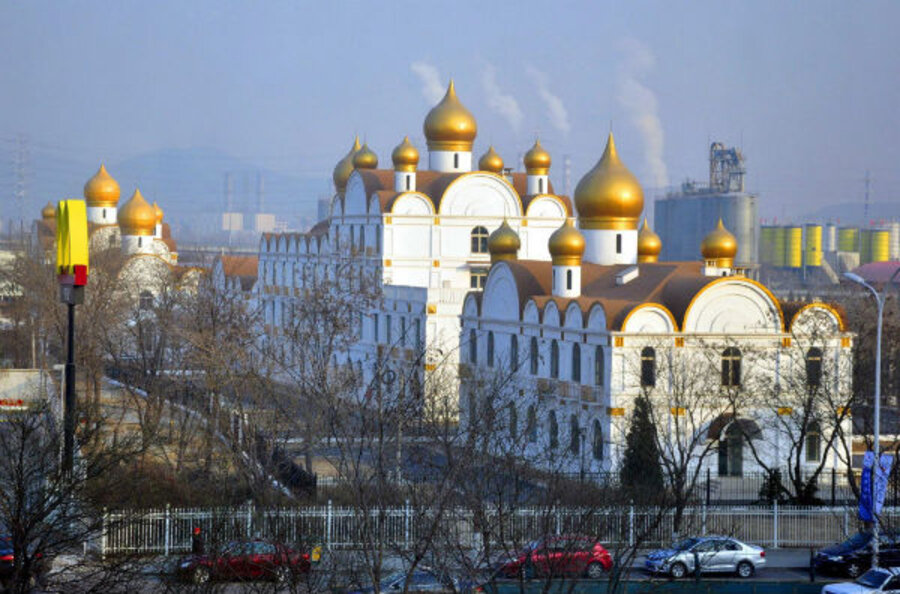In a Beijing suburb, an unorthodox architectural tribute
Loading...
| Beijing
You see some odd things in China; just last week I came across a Buddhist monk paying his prayerful respects to a statue of Mao Zedong in the former Chinese leader’s hometown. But that’s another story.
Today, in a grimy industrial suburb of Beijing, I found four buildings that could have been transplanted from Moscow's ancient cathedral square, golden domes and all.
Their inspiration may have been the 15th century Cathedral of the Assumption, where Ivan the Terrible was crowned Tsar of All Russia. But there is nothing sacred about their function. They were built to house Mentougou district’s parks department, weather bureau, seismological office, and river water management service.
Why? What flight of fancy floated a local Chinese bureaucrat so far into the realm of the absurd as to build four different Russian Orthodox church mock-ups in a row, planting them like gold-leafed, whitewashed alien edifices in the middle of a nondescript urban cityscape?
Employees of the parks department, inspecting their still unfurnished new digs on Tuesday, couldn’t say. They suggested I call the local government’s propaganda bureau. I did, many times. Nobody answered the phone.
Over at the Mentougou tourist information office (the town is trying to attract more visitors to the hills beyond its factories) Zhang Bin suggested that the buildings “match the park” beside which they stand. “They look nice and they are meant to be part of the scenery,” he explained.
Local residents appeared puzzled by the unfamiliar architecture. “Is it Islamic?” wondered Ms. Gao, a middle-aged woman taking a morning stroll. She studied the domes and arched eaves. “They are a bit odd and I’m not sure what they are doing here. But they look nice.”
“This is European style, isn’t it?” wondered another passer-by, Ms. Jin. “I heard they bought European architectural plans. To be honest, I think we Chinese should build in the Chinese style.”
Five-year ban
Mentougou is not alone in drawing on distant and unlikely architectural models. In one impoverished village in the southern province of Anhui, officials earned nationwide notoriety for building a monstrous palace that closely resembled the White House.
But that was before President Xi Jinping, seeking to crack down on official profligacy last July, slapped a five-year ban on the construction of new government buildings.
Bid documents for the faux-Kremlin compound, seen by a reporter for the Beijing Youth Daily, put its cost at a cool $5 million.
Everyone to do with the project now seems embarrassed by it. The gatepost signboard identifying one of the buildings as the district weather bureau – clearly visible in photographs that appeared on the internet on Monday – has been removed. And employees who answered the phone at two architects’ firms listed on the bid documents denied their companies had any involvement in the project.
Ivan the Terrible would have known how to deal with petty officials who defied his will. So would Chairman Mao. Mentougou’s municipal bureaucrats can only hope that President Xi is of a more merciful disposition.








